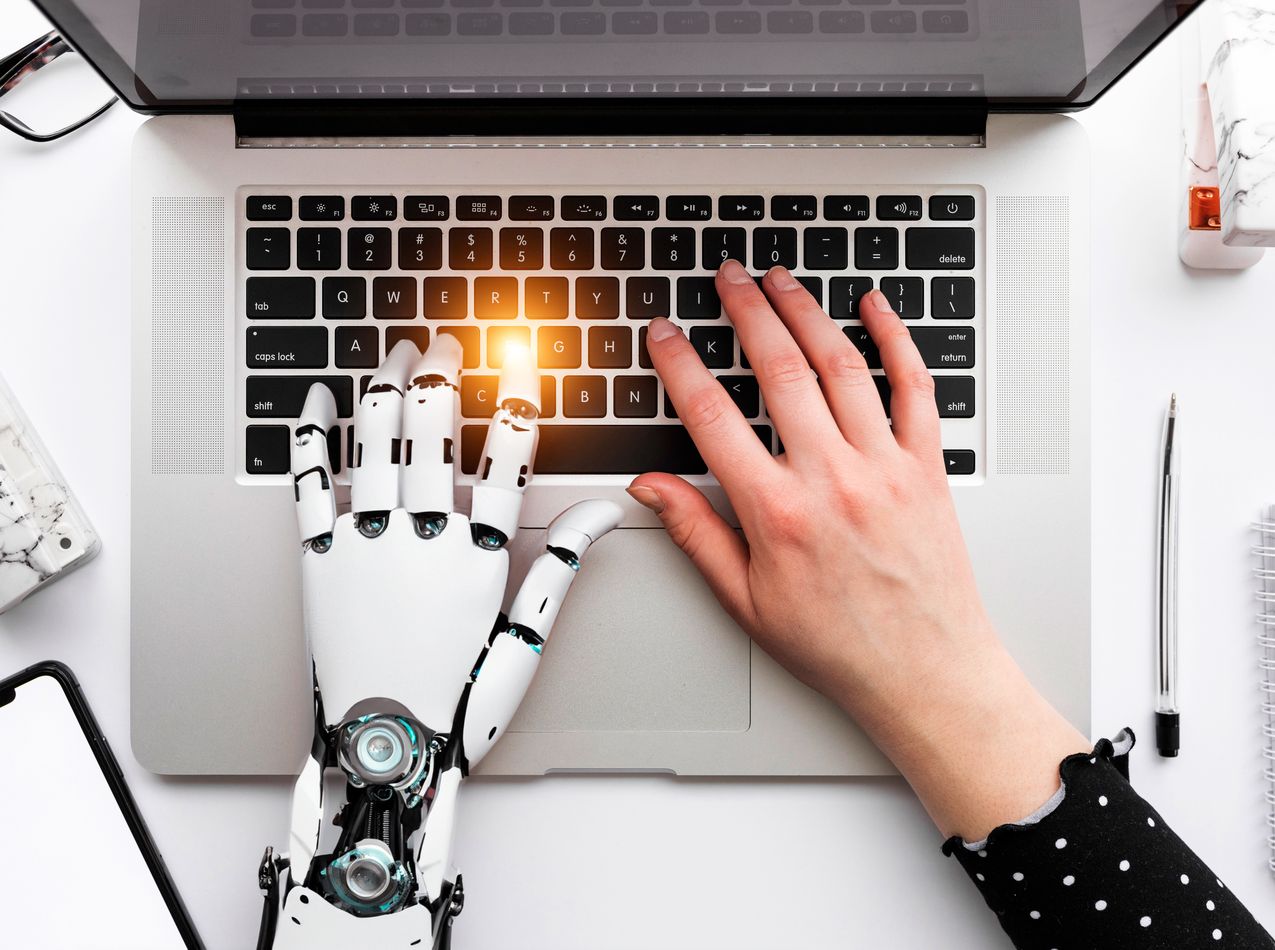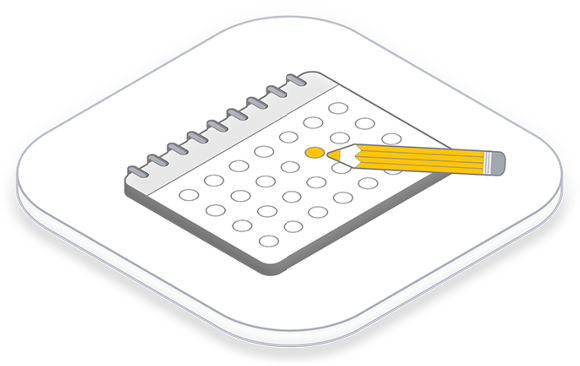The 2024 super election year will be the first to be completely dominated by Artificial Intelligence. In addition to three state elections, the European elections and the presidential elections in the USA will also take place. AI has the potential to fundamentally change the election campaign and the elections themselves – both positively and negatively. We therefore want to show the extent to which AI can influence democratic processes and how content for election campaigns can be created efficiently using AI in the shortest possible time.
Artificial Intelligence poses challenges for democracies
Fake news is a key problem in connection with AI in the election context. Thanks to advanced algorithms, it is now possible to generate convincing fake news, deepfakes (manipulated videos) and realistic-looking images. These can be used to discredit political opponents or manipulate public opinion. What is particularly worrying is the ease with which such content can be disseminated. This is because social networks and platform algorithms often unintentionally amplify the reach of this fake news. At this point, we want to take a closer look at AI-generated deepfakes in the field of videography and language. At the same time, we will teach you how to recognize them.
Video-based deepfakes
The use of AI to create fake videos has increased in recent years. Here are some specific examples that illustrate the spread and potential dangers of this technology:
Politicians in the crosshairs
There are already a large number of fake videos of Federal Chancellor Olaf Scholz. One of the latest shows him supposedly working out with considerable muscle tonus. The video is being distributed on the TikTok platform, among others. Numerous comments indicate that users believe this video to be authentic, despite the rather poor video quality and questionable context. And that is problematic. Another well-known example is a deepfake video of Barack Obama that was created by Buzzfeed and director Jordan Peele back in 2018. In this video, former US President Obama appears to say things he never said, such as insults towards Donald Trump. The video was deliberately produced to draw attention to the dangers of deepfakes.
Disinformation is booming
In the political context, deepfakes are often used to spread misinformation. For example, there have been cases where political leaders can be seen in videos making statements or performing actions that never took place. These can be used at sensitive times, such as before elections, to influence public opinion or cause unrest. On platforms such as Snapchat and Instagram, filters and effects that can change faces are very popular. These technologies are also based on forms of AI and can be seen as harmless precursors to deepfakes. However, they show how easy and accessible such technologies have become.
How to recognize video-based deepfakes
Deepfakes can look deceptively real, but there are some techniques and clues that can help you spot them. Here are some handy tips:
-
Look for facial inconsistencies
Unnatural facial movements or expressions: If facial movements or expressions appear strange or unnatural, it could be a deepfake.
Inconsistencies in the eyes or the edge of the iris: In deepfakes, the eye areas are often incorrect or unnatural.
Poorly synchronized lip movements: If the lip movements do not exactly match the spoken language, this could be an indication of a manipulated video.
-
Look for anomalies in the image quality
Inconsistent lighting and shadows: Check that lighting and shadows on the face and in the background are logical and consistent.
Pixelation or blurred areas: Sometimes when creating deepfakes, certain areas of the video, especially at the transitions between the face and neck, may appear pixelated or blurred.
Inconsistent hair boundaries: Hair is difficult for AI models to render correctly, so hair borders can often appear unnatural.
-
Check the context of the video
Source criticism: Consider where the video comes from and whether the source is trustworthy.
Plausibility of the content: Reflect on whether the content of the video seems realistic and plausible or whether it raises doubts.
-
Analyse audio
Unnatural voice patterns: Listen carefully to see if the voice has unnatural pitch changes or rhythms, which may be an indication of artificial production. This is also an important criterion for unmasking voice-based deepfakes.
Voice-based deepfakes
Deepfakes are often first thought of as fake videos, but the technology of AI-based speech synthesis has also made great strides. Such AI-generated voice deepfakes can be equally impressive and misleading. Here are some examples and applications in the field of AI-generated speech:
-
Synthetic voices of politicians
AI systems can be used to mimic the voices of politicians or public figures. This technology is sometimes used in media and entertainment, but can also be misused to create fake audio recordings that make these people appear to say things they never said.
-
Telephone fraud
One particularly worrying use of voice deepfakes is in the area of fraud. Criminals can imitate the voices of relatives or superiors to trick their victims into transferring money or revealing sensitive information. There have been cases where fraudsters have imitated the voices of CEOs to scam financial transfers from employees.
How to detect language-based deepfakes
Detecting voice-based deepfakes, or synthesized speech, can be a challenge as the technology becomes more sophisticated. However, here are some strategies that can help you identify these deepfakes:
-
Sound quality and naturalness of speech
Unnatural stress or intonation: Listen for signs of unnatural stresses or strange intonation patterns that would be atypical in natural speech.
Breathing sounds and micro-pauses: Real human speech usually includes breathing sounds and micro-pauses. If these are missing, it could be an AI generation.
-
Consistency in the way of speaking
Inconsistent speech rates: Watch for sudden changes in speaking rate that are unusual in natural conversation.
Repeated speech patterns or phrases: AI-generated speech may have repetitive patterns that are less common in natural speech.
-
Background noise and audio quality
Missing or inconsistent background noises: Check whether background noises are present and whether they logically fit the context.
Digital artifacts or distortions: Digital artifacts or slight distortions in the audio can be indications of a synthetic production.
Opportunities through Artificial Intelligence – content creation made easy
Despite these challenges posed by video and voice-based deepfakes, AI also offers significant benefits for democracy, particularly in the creation of content for election campaigns.
Increasing efficiency and reducing costs
AI can significantly speed up and simplify the content creation process. Text, images and videos can be produced in a fraction of the time it would take a human content creator. This not only reduces costs, but also allows for greater scaling of content production, which can be particularly useful in large-scale election campaigns.
Personalization of content
AI can be used to efficiently personalize content to address the specific needs and interests of different voter groups. This increases the relevance and effectiveness of campaign messages and improves voter loyalty.
Improving the quality of information
AI can also help to improve the quality of information that voters receive. Automated fact-checking and source verification could curb the spread of misinformation. AI-supported systems could recognize when facts are misrepresented and provide users with correct information.
Conclusion
The use of AI in election campaigns poses significant challenges for democracies, particularly with regard to the spread of fake news and the protection of privacy. But at the same time, it also opens up new opportunities to make election campaigns more efficient, targeted and informative. It is crucial that policy makers and the public are aware of this dual nature of AI and promote both regulatory measures and educational initiatives to maximize the positive aspects of the technology and minimize its risks. Ultimately, the wise use of AI could not only improve the way campaigns are run, but also help to strengthen democracy itself.
Would you like to learn more about creating content using AI? Get in touch!
About the author



Comments